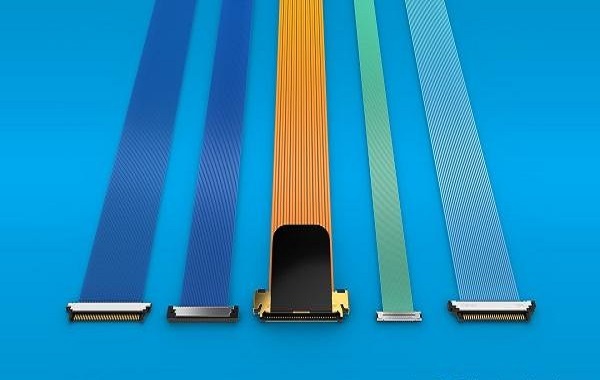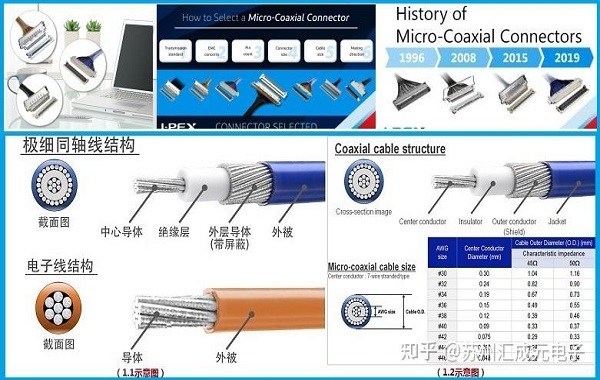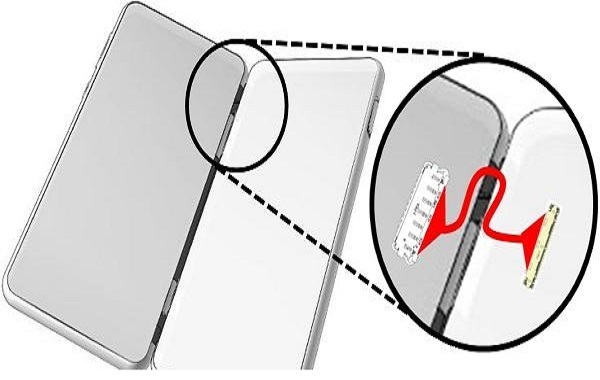In today's era of high-speed data transmission and the widespread application of precision electronics and consumer electronics equipment, ultra-fine coaxial cables (Micro Coaxial Cable) are gradually replacing traditional coaxial cables and becoming the preferred choice for internal connections of high-performance equipment. Many people believe that it is just "a thinner coaxial cable," but in fact, there are essential differences between the two in terms of structure, electrical performance, and manufacturing processes. This article will analyze the core differences between ultra-fine coaxial cables and ordinary coaxial cables from three dimensions: structure, performance, and application.

The core distinction in structure
1. Significant difference in wire diameter size
The outer diameter of extremely thin coaxial cables is usually between 0.3mm and 1.2mm, while traditional coaxial cables are typically between 2mm and 10mm, even thicker. Extremely thin coaxial cables can achieve flexible wiring inside devices with limited space, which is an important foundation for achieving device miniaturization and lightweighting.
Internal structure is further miniaturized
The extremely thin coaxial cable still maintains the coaxial structure of core line - insulating layer - shielding layer - outer sheath, but its layer thickness is thinner and the accuracy is higher. In the manufacturing process, micro-level extrusion and precise weaving technologies are often used to ensure impedance consistency and signal integrity.
3. Material lightweighting and high-performance enhancement
Unlike traditional PVC materials, ultra-fine coaxial cables usually adopt high-performance fluoroplastic materials such as FEP, PFA, or polyimide. These materials are not only resistant to high temperatures and bending but also maintain low dielectric losses in GHz-level signal transmission.

Key differences in electrical performance
Higher frequency transmission capability is stronger
Extremely thin coaxial cables are optimized for high-speed digital signals, with more precise impedance control, lower return loss (Return Loss) and standing wave ratio (VSWR), which can meet high-speed standards such as USB 3.1, MIPI, Thunderbolt, LVDS, etc.
Signal integrity is better
Due to its more precise shielding structure and higher symmetry, the extremely fine coaxial cable can still maintain excellent signal fidelity in a small volume, effectively suppress EMI (electromagnetic interference) and crosstalk, and enhance the system's noise resistance.
Support more high-speed interfaces
Traditional coaxial cables are commonly used for radio frequency, television, and low-frequency video signals, while extremely thin coaxial cables are compatible with a variety of high-speed digital interfaces, making them an irreplaceable connection solution for modern high-definition camera modules and data acquisition systems.

The fundamental difference in application scenarios
Typical applications of extremely fine coaxial cables
Camera module connection in smartphones and tablets
Medical endoscope and minimally invasive equipment signal transmission
Precision sensor wiring in industrial automation
Drones, AR/VR, security cameras, and other lightweight systems
Common applications of ordinary coaxial cable
Video surveillance and simulated camera system
Cable television and broadcast signal transmission
Outdoor Antenna Connection and Laboratory RF Testing
• General RF communication and signal wiring scenarios

Four, Comparison of Manufacturing Technology and Cost
The manufacturing difficulty of extremely fine coaxial cables is much higher than that of traditional coaxial cables. Its production involves the precise twisting of ultra-fine conductors, the uniform extrusion of thin insulation layers, and the high-density braiding shielding, etc., which require extremely high precision of equipment and process control. Therefore, its unit cost is relatively higher as well. However, in applications with high-performance and high reliability requirements, its technical advantages far exceed those of traditional coaxial cables.

The difference between ultra-fine coaxial cables and ordinary coaxial cables is not just in size. It represents the development trend of electronic interconnection technology towards high-frequency, miniaturization, and high reliability. With the continuous upgrading of intelligent terminals, medical instruments, and industrial automation, ultra-fine coaxial cables will become the mainstream choice for high-speed signal transmission.
I amSuzhou Huichengyuan Electronic TechnologyLong-term focus on the design and customization of high-speed cable harnesses and ultra-fine coaxial cable harnesses, committed to providing stable and reliable high-speed interconnection solutions. For more product information or technical support, please contact:Manager Zhang 18913228573 (WeChat same number)。




